כללי
תחבורה
אנשים
אירוח
אוכל ושתייה
ביקור באתרים
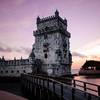 What to see in Portugal?
What to see in Portugal?
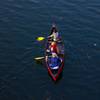 מה לעשות בפורטוגל?
מה לעשות בפורטוגל?
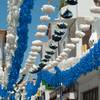 Are there any festivals in Portugal?
Are there any festivals in Portugal?
 What are the best tours to take in Portugal?
What are the best tours to take in Portugal?
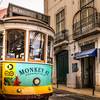 Are Lisbon and Porto city cards worth buying?
Are Lisbon and Porto city cards worth buying?
 What museums in Lisbon offer free entry?
What museums in Lisbon offer free entry?
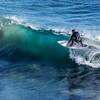 מה אני צריך לדעת על גלישה בפורטוגל?
מה אני צריך לדעת על גלישה בפורטוגל?
משפטי
כסף
בטיחות ובריאות
נסיעות משפחתיות
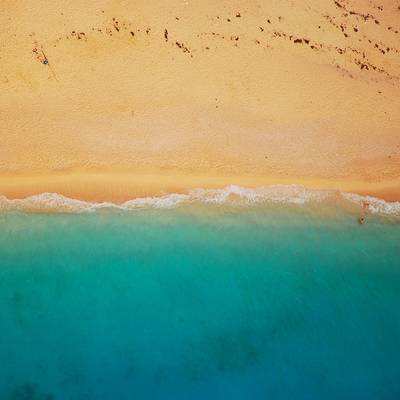
What are the best beaches in Portugal?
Portugal is famed for its beautiful beaches, and along the 1,794 km of coastline are found some of Europe’s finest beaches. These beaches are as diverse and varied as Portugal, ranging from vast expanses of golden sands through to secluded coves with picturesque scenery.
Praia da Foz do Arelho. The beach is positioned on the mouth of the Lagoa de Óbidos, and is one of the prettiest natural landscapes of central Portugal. This unique positioning of the beach means that one side is exposed to the might of the Atlantic Ocean, while the rear of the beach opens onto the calm waters of the lagoon. The town of Foz do Arelho, behind the beach, is a pleasant, low-key resort town, which is a favorite with Portuguese families.
Praia do Barril. Not only does the beach offer the soft sands and natural scenery of the eastern Algarve but it also provides a glimpse into the fishing heritage of the region. Lining the sand dunes are hundreds of rusting anchors (Cemitério das ncoras), a memorial to the abandoned tuna fishing community, which was based on the Praia do Barril until the 1960s. Barril beach lies within the Parque Natural da Ria Formosa, and this reserve offers some finest, unspoilt beaches of the Algarve.
Praia da Mareta. he extreme western Algarve is a region of towering cliffs, powerful seas and stark, wind-blasted scenery. Sagres is the largest town of this region, and contains four outstanding surfing beaches, ideal for experienced surfers. Praia da Mareta not only offers a vast expanse of sand, but is also within walking distance of the cafes and bars of the town. Praia da Mareta is slightly sheltered from the ferocity of the Atlantic Ocean, by the barren headland on which the Fortaleza de Sagres fort is positioned.
Praia do Senhor da Pedra. Praia do Senhor da Pedra is the distinctive and much-photographed beach of northern Portugal. Perched on a rocky outcrop along the water’s edge is a Baroque chapel. Apart from being almost instantly recognisable, the beach is surprisingly good, while the surrounding town (Miramar) is likeable and low-key. Praia do Senhor da Pedra is characteristic of Costa Verde (Green Coast), with it’s dark golden sands, black basalt rock outcrops and powerful Atlantic waves. Costa Verde is often overlooked as a holiday destination but there are many fantastic beach towns including Espinho, Vila do Conde, Povoa de Varzim and Vila Praia de ncora.
Tróia Peninsula. Powder white sands, sparkling blue ocean, majestic birds and frolicking dolphins only begin to describe the Troia Peninsula. Approximately 17.7 km long, it extends from Comporta on one end to the mouth of the Sado Estuary on the other. Its striking beauty has seen this once off-the-beaten-track spot dubbed the ‘new Algarve‘.
Praia da Rocha. This is the best bustling tourist beach of Portugal. The beach is so beautiful, it somehow even makes the towering hotels and apartments that line the cliffs somehow look good too. The Praia da Rocha beach is always a hive of activity; there are beach sports, water sports, uber-chic beach clubs, and even host festivals in the summer. The beach is enormous, easily able to handle the many thousands of summer time tourists, while further west along the coast are secluded coves hidden between the distractive red cliffs.
Praia da Dona Ana. Praia da Dona Ana is one of the most visually beautiful beaches in our list. The beach nestles between the golden cliffs of the Ponta da Piedade headland, and the soft sands are lapped by calm turquoise sea waters. Dona de Ana beach is frequently used by marketing campaigns to promote the Algarve, and it is one of the few beaches that is actually more beautiful in real life.
Praia de Benagil. One of the most iconic and heavily photographed caves in the Algarve is located near Carvoeiro in a fishing village called Benagil. Algar de Benagil is a main standout feature of the local beach and is only accessible by water (travel by boat is the easiest). Praia de Benagil is much more than this singular “algar” or grotto, however, and is one of the quieter and more secluded spots due to limited parking spaces nearby; also, it is surrounded by steep cliffsides that are common in the Algarve.
Praia da Marinha. Located in Lagoa, the Praia da Marinha is another striking and typical Algarve-like beach, covered in soft sand and fringed with colorful cliffsides. It is also among the least busy spots in the area, perhaps because it is only really accessible by car followed by a climb down many steps along the cliffside. Those who make the trip should bring snorkel gear in addition to tanning supplies, since the Praia da Marinha enjoys calmer waters perfect for swimming the day away.
Praia da Nazaré. Nazaré in central Portugal is a top surf spot, especially for the most adventurous adrenaline-lovers. The waves are enormous, so much so that the largest wave in the world was surfed here. Nazaré should be enjoyed with caution but enjoyed nonetheless – the best time to visit is during spring and fall, while the weather is still lovely but still between tourist seasons. In addition to enjoying the coast itself, Nazaré is a great place to eat fresh seafood and immerse yourself in Portugal’s fishing culture.
Praia Zambujeira do Mar. Many people know Alentejo for its large fields and delicious wine, but it is also home to a few of the country’s most beautiful beaches. Located in the middle of the Costa Vicentina e Sudoeste Alentejano natural parl, it is often described as a quiet surf beach surrounded by wild countryside and an almost mysterious beauty. The only time this quiet fishing village really comes alive is in August when the area hosts one of the largest music festivals in the country. Otherwise, it’s a great place to get away from the crowds and enjoy the sights, whether of the beach itself or the surrounding natural park.
Portinho da Arrabida. Just under an hour south of Lisbon is the Serra da Arrabida, a popular hiking spot that tucks away more stunning beaches along the mountainsides. Among the top choices is Portinho da Arrabida with its multi-hued water and white sands. Nearby are many quaint fishing villages, where visitors can enjoy traditional Portuguese cuisine and culture.
Praia da Miramar. The Capela do Senhor da Pedra is the beautiful solitary chapel that sits on a rocky stage and adds an extra allure to Praia da Miramar in northern Portugal. The beach around the chapel is large, often uncrowded, and offers exceptional sunsets (especially when the chapel is included in the backdrop).
Praia Formosa. One of the best and most beautiful beaches on the islands is Praia Formosa in Santa Maria, in the Azores. The standout feature is its yellow-white sands that are cradled between the bright blue Atlantic and green rolling hills. For a true outdoorsy treat, spend a few days in this Atlantic pearl while camping nearby.
Dunas de São Jacinto. Aveiro is a rural district with the sea to one side and the Serra da Freita, Arestal and Caramulo mountains on the other. The dunes of São Jacinto, west of Aveiro and about an hour-and-a-half south of Porto, are home to a huge variety of birdlife, and its status as a protected nature reserve means that the 8km of clear white sand remains untouched. This is a wild beach fringed by pine forest, without a lifeguard or cafe, but boardwalks make getting there a lot easier. Look out for sandpipers, gannets and osprey.
Praia do Baleal. Baleal beach is a magical spot an hour’s drive north of Lisbon, where a 4 km sandy curve links the Peniche peninsula to the mainland. Sea-worn rocks provide seclusion and there are bathing lagoons at low tide and rockpools with plenty of glistening seaweed, tiny crabs and shells – perfect for mini explorers. There’s good surfing, too, but with both north and south aspects swimmers can find calmer water. For more adventure head 2 km north along the coast for limestone cliffs wrought with ravines and sea caverns. There’s a jolly assortment of bars, cafes and restaurants selling fresh seafood all within meandering distance back towards Peniche.
Praia da Adraga. The Sintra hills, half an hour or so north of Lisbon, hide ancient castles among forests before dropping down to dramatic cliffs with several coves, including Praia da Adraga. Shaped like an elephant’s trunk, it’s sandy, with rocks arching into the sea. On hot summer days, the rocks provide welcome shade and there’s a small cave to explore at low tide. Though popular with surfers (check out Adraga Surf Camp), the beach itself isn’t busy. Behind it, there’s a little restaurant with great seafood. From here, there’s a walking trail along the cliffs for 5 km south to Cabo da Roca, the westernmost tip of mainland Europe.
Praia da Arrifana. For a taste of Big Nature head to the western shores of the Algarve where tourism takes a backseat to the wind and the waves. The pretty clifftop village of Arrifana has managed to retain its local character whilst its huge beach attracts surfers and outdoorsy-types year-round.
Praia do Camilo. One of the most recognisable symbols of Algarve tourism are the wooden steps leading down to Praia do Camilo, one of Lagos’ best beaches. Camilo has plenty of unusual rock formations and beautiful translucent water, but being just a 30-minute walk from the centre of town it does get busy, particularly when the tide is high.

איזו אוכל מקומי לנסות בפורטוגל?

אם אני יכול להשתמש בכרטיס חיוב או אשראי?

אפשר לשתות מים מהברז בפורטוגל?

מהן המשקאות האלכוהוליים שכדאי לנסות בזמן השהייה בפורטוגל?

האם יש כללים שאני צריך להידבך כדי להיות מכבד סביב הפורטוגזים?
